What Skills You’ll Learn
| 1. Planning and administering network security for organizations |
| 2. Recognizing security risks, threats, and vulnerabilities |
| 3. Ensuring compliance with regulatory standards |
| 4. Designing and implementing network security policies |
| 5. Applying security principles in distributed and mobile computing environments |
| 6. Implementing Identity and Access Management, encryption, and network segmentation |
| 7. Managing Windows and Linux Security Administration |
| 8. Addressing security risks in mobile devices and IoT |
| 9. Implementing strong data security techniques |
| 10. Managing security in virtualization technologies and cloud platforms |
| 11. Implementing wireless network security |
| 12. Conducting risk and vulnerability assessments |
| 13. Providing first response to security incidents |
| 14. Identifying Indicators of Compromise and Attack |
| 15. Integrating threat intelligence for proactive defense |
| 16. Conducting Attack Surface Analysis |
| 17. Assisting in Business Continuity and Disaster Recovery planning |
| 18. Monitoring network traffic and performing log management |
| 19. Managing proxy, content filtering, and troubleshooting network issues |
| 20. Hardening security of endpoints and selecting firewall solutions |
| 21. Configuring IDS/IPS for enhanced security |
| 22. Maintaining an inventory of network devices |
| 23. Providing security awareness guidance and training |
| 24. Managing AAA for network devices |
| 25. Reviewing audit logs and analyzing security anomalies |
| 26. Maintaining and configuring security platforms |
| 27. Evaluating security products and operations procedures |
| 28. Identifying and classifying organizational assets |
| 29. Implementing system integrity monitoring tools |
| 30. Understanding EDR/XDR and UEBA solutions |
| 31. Conducting PIA processes for privacy assessment |
| 32. Collaborating on threat hunting and incident response |
| 33. Understanding SOAR platforms in cybersecurity operations |
| 34. Integrating Zero Trust principles into security architectures |
| 35. Staying updated on emerging cyber threats |
| 36. Understanding the role of AI/ML in cyber defense. |




















